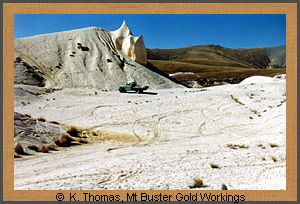|
BRIEF HISTORY OF THE MANIOTOTO
The Maniototo did not support Maori settlement, but the area was part of a route Maori travelled to collect greenstone (NZ Jade).
Maori camps, including earth ovens, have been found in the area and a number of artefacts were found when Europeans first settled in the Plain. The remains of Moa, the largest flightless bird known, have been found in the Maniototo.
 Early European land settlement followed much the same pattern as most of rural New Zealand, with large areas of land (runs) leased by
partnerships or individuals principally for grazing sheep. Today, landholdings are considerably smaller, however, a few runs are still being farmed by
descendants of the original landholders. Surveyed by JT Thompson in the 1850's, Maniototo has a collection of place names unique in New Zealand. Reflecting Thompson's farming origins in Scotland, names
such as Eweburn, Sowburn, Wedderburn, Gimmerburn, Pigburn, Kyeburn, Hogburn, were given to various areas in the Plain. It is said
that the names were given in a fit of pique when Thompson's original choices were turned down by the Lands Board, however, a recent biography by one of his descendants has corrected this amusing, if
somewhat incorrect tale. Early European land settlement followed much the same pattern as most of rural New Zealand, with large areas of land (runs) leased by
partnerships or individuals principally for grazing sheep. Today, landholdings are considerably smaller, however, a few runs are still being farmed by
descendants of the original landholders. Surveyed by JT Thompson in the 1850's, Maniototo has a collection of place names unique in New Zealand. Reflecting Thompson's farming origins in Scotland, names
such as Eweburn, Sowburn, Wedderburn, Gimmerburn, Pigburn, Kyeburn, Hogburn, were given to various areas in the Plain. It is said
that the names were given in a fit of pique when Thompson's original choices were turned down by the Lands Board, however, a recent biography by one of his descendants has corrected this amusing, if
somewhat incorrect tale.
But it was the discovery of gold, which opened up the Maniototo, and its
impact can be seen to this present day. Townships such as Naseby, Patearoa, and St Bathans are reminders of the gold rush days. Other
towns such as Hamiltons have vanished, although their names define the districts to this day. Some rich returns were recorded, 2oo ounces
in three weeks at Patearoa for example, but even with the advent of sluicing as a mining technique, many miners turned to farming or other
occupations because of the difficulties they encountered. Water was a scarce resource and the many water races which network the area were
dug by pick and shovel, often a bottle filled with water was used to find the level, and wheelbarrows were used for spoil removal. The Maniototo
has been left with a rich legacy from these goldrush days, with historic buildings and cemeteries, and historic hotels which were coach stops
on the way to Central Otago. Another legacy is Curling, the sport unique to the area, likened to a game of bowls on ice.
|